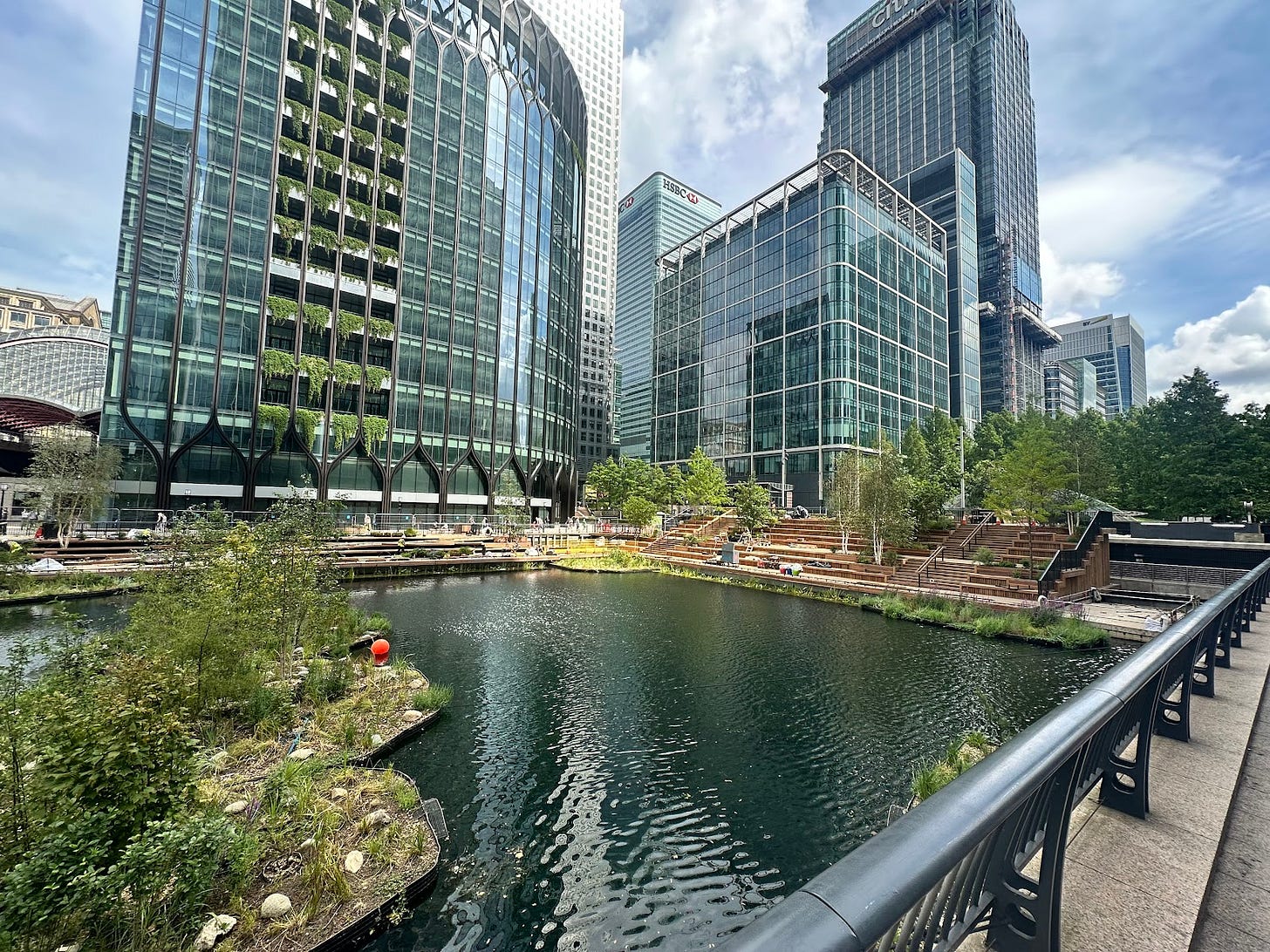A Thames for everyone
Cleaning up London's waterways
Written by Harry Rushworth for the Greater London Project. Harry writes about transport, infrastructure, and growth on Full Steam Ahead.
London might be the focus of this newsletter, but in recent weeks even our eyes were on Paris as it hosted the Olympic Games. The River Seine was a surprising standout amongst the Olympic coverage, where in a break from tradition it played host to an innovative, if controversial, opening ceremony, and was home to the marathon swimming and triathlon events. For those who’ve visited Paris and witnessed the historically filthy Seine, this might come as a surprise, as the water quality had been so bad that public swimming and bathing has been banned for over a century.
Capital investment
Over the past two decades, Parisian authorities have invested billions of euros into transforming the city’s waterways and water systems, culminating in the Mayor publicly taking a dip in the Seine to prove the investment a success. Though unfortunately in the run up to the Olympics Paris did have an unprecedented rainfall surge, resulting in the triathlon event being pushed back by a few days.
The strategy for this transformation started with changing how water was managed in the city. Following the nationalisation of the local water network in 2009, the city invested in new more-efficient treatment plants, commenced a programme to seal pipe leaks across the network, and increased the provision of public fountains and public taps across the city.
But the more challenging task was dealing with dirty water; sewage, storm water, and agricultural runoff. The largest investment has been in the creation of a new €1.4bn underground overflow tank that during surges, can hold dirty water for later treatment rather than discharging it into waterways like the Seine. Smaller interventions have also been carried out, with funds provided to the agricultural sector in the Greater Paris area to reduce runoff and pollution from entering waterways, and cleanup activities taking place in old basins and canals.
Though the Seine remains the biggest challenge, the changes are already seeing some success, with new public swimming pools and cordoned areas open in the Canal Saint Denise, Bassin de la Villette, and on limited stretches of the Seine.
These revitalised waterways are not just reducing pollution and enhancing biodiversity in Paris; they are also providing additional leisure facilities in one of the densest and most land-constrained cities in Europe, which is even more welcome given the increasing rate of heatwaves the city is due to experience.
Across the Channel
Like Paris, London is also threaded with waterways, basins, and canals. Though a limited few are still in active use, many just sit stagnant, a long cry from London’s time as the maritime capital of the world. And like Paris, many of these are filthy. Earlier this year, six miles of the Grand Union Canal were found to be contaminated with cooking oil.
And in extreme cases, they can be deadly, with a death in Shadwell Basin in 2019, a popular (albeit illegal) bathing spot during hot spells. Such was the condition of Shadwell Basin that it took the police 16 hours to retrieve the body. In British tradition, the coroner, rather than demand the waterway be cleaned up, castigated the council for not having larger more visible signs warning people not to swim and threatening high fines.
Refreshing our waterways
Given the scale of London’s waterways, the prize of revitalising the old docks, basins, and canals across the city should not be underestimated, especially given Paris has a proven model that we can replicate. And we have our own model right here at home, with the popularity of the swimming ponds at Hampstead Heath. Alongside the benefits of a cleaner environment, more access to nature, and new public amenities, there’s the moral case of public safety.
Several key investments have already been made to start this clean-up, such as the Thames Tideway Tunnel which will dramatically reduce storm overflows into the river. The Port of London Authority plans to build on this and clean up the Thames and its tributaries in the long term.
The benefits of cleaner waterways can be seen in Canary Wharf where the Middle Dock is being transformed through private investment from a lifeless basin into a new swimmable water with accessible decking, tiered waterside seating, and planted pontoons.
We should be much more ambitious in how we manage our waterways and make the most of London’s maritime legacy. It should be a priority to clean up and remove debris from old docks like the Shadwell Basin. Some of our larger docks, like Greenland and the Royal Victoria are already used for water sports, but could benefit from public pontoons and decking, with areas cordoned for swimming.
Our canals and rivers need better management, targeted clean-ups, larger fines for dumping and fly-tipping, and campaigns on wastewater disposal. We also need to be more proactive in urban design and planning, with sustainable drainage and stormwater and sewage separation built as standard, rather than as an afterthought.
London’s waterways were once the envy of the world. With some TLC, they could be again!




